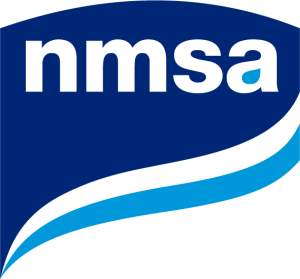
News Release
Tuesday, July 23, 2019
Contact: Alexa Lopez (703) 789.7853| alopez@asce.org
American Society of Civil Engineers to grade stormwater for first time in 2021 Infrastructure Report Card
Washington – The American Society of Civil Engineers (ASCE) and its Environmental & Water Resources Institute (EWRI), National Municipal Stormwater Alliance (NMSA) and the Water Environment Federation (WEF) today announced that stormwater infrastructure will be evaluated and graded in the next ASCE 2021 Infrastructure Report Card. This marks the first inclusion of a national stormwater infrastructure grade.
As the only growing source of water pollution in many waterways across the country, stormwater is water that runs off the land and hard surfaces from rain and snowmelt events. With urban population growth and development, in addition to more frequent and intense storms nationwide, there is mounting pressure on stormwater infrastructure.
“Effective stormwater management in our cities and along our highways affects nearly every person every day,” said Eric Loucks, P.E., EWRI Governing Board. “With more frequent, intense storms on top of flooding events, we’re seeing more stormwater runoff, risking flooding of our communities, erosion of our streams and pollution of our water. We need effective stormwater management that can treat stormwater as a beneficial resource, putting the water to work where it’s needed most. Including stormwater infrastructure as a Report Card category will help policymakers get a better handle on the magnitude of the problem across the United States and how we can move forward in taking advantage of this valuable resource.”
ASCE’s 2017 Infrastructure Report Card rated the overall condition of the nation’s infrastructure a cumulative grade of “D+,” with an investment gap of $2 trillion. ASCE’s inclusion of a stormwater chapter reflects increased interest in stormwater infrastructure by decision-makers to provide for the public sustainable solutions to the problems of flooding and water pollution. ASCE’s state report card committees have periodically graded stormwater infrastructure – most recently, in California, Georgia, Nevada, Pennsylvania and Washington. The stormwater chapters in these states have recommendations to modernize stormwater infrastructure to better prepare for the future and ultimately raise the grades.
“Stormwater infrastructure protects our communities from flooding and our waterways from pollution,” said NMSA Chair Scott Taylor. “Grading the nation’s stormwater infrastructure increases its visibility and helps communities get the resources needed to improve their stormwater programs. We applaud ASCE’s foresight in making this important addition to the Infrastructure Report Card.”
In addition, the WEF Stormwater Institute led an effort, supported by NMSA, to gather the first-ever analysis of the U.S. stormwater sector needs, which revealed an estimated $7.5 billion annual funding gap and identified top priorities and challenges across the country. This inaugural survey, the Municipal Separate Storm Sewer System (MS4) Needs Assessment Survey, reflects an effort to learn more about the nature and needs of the MS4 sector at a scale that has never been attempted and will assist analysis for the 2021 Infrastructure Report Card.
“The inclusion of stormwater infrastructure in the ASCE’s report card will provide a much-deserved boost in visibility for infrastructure that is vital to communities across the country,” said WEF Executive Director Eileen O’Neill. “We hope that adding stormwater to the report card will result in more resources and focus being directed to this essential part of our infrastructure, and subsequent improvements to water quality.”
The ASCE Infrastructure Report Card is issued once every four years and the next one will be released in March 2021.
###
ABOUT THE ASCE INFRASTRUCTURE REPORT CARD
Using a simple A to F school report card format, ASCE’s Infrastructure Report Card provides a comprehensive assessment of current infrastructure conditions and needs and assigning grades and making recommendations to raise them. The ASCE Committee on America’s Infrastructure, made up of expert civil engineers from across the country, assigns grades using the following criteria: capacity, condition, funding, future need, operation and maintenance, public safety, resilience and innovation.Additional information regarding the Infrastructure Report Card and state report card program may be found on www.infrastructurereportcard.org.
ABOUT THE AMERICAN SOCIETY OF CIVIL ENGINEERS
Founded in 1852, the American Society of Civil Engineers represents more than 150,000 civil engineers worldwide and is America’s oldest national engineering society. ASCE works to raise awareness of the need to maintain and modernize the nation’s infrastructure using sustainable and resilient practices, advocates for increasing and optimizing investment in infrastructure, and improve engineering knowledge and competency. For more information, visit www.asce.org or infrastructurereportcard.org and follow us on Twitter, @ASCETweets and @ASCEGovRel.
ASCE’s Environmental & Water Resources Institute (ASCE‐EWRI) is the recognized leader within ASCE for the integration of technical expertise and public policy in the planning, design, construction and operation of environmentally sound and sustainable infrastructure impacting air, land and water resources. @ASCE_EWRI
ABOUT THE NATIONAL MUNICIPAL STORMWATER ALLIANCE
The National Municipal Stormwater Alliance (NMSA) is a 501(c)(3) devoted to supporting Municipal Separate Storm Sewer System (MS4) permittees. The organization is an alliance of state and regional groups made up of MS4 permittees and focused specifically on MS4 issues. NMSA’s vision is to help communities tackle stormwater challenges to provide clean water for the nation. For more information, visit nationalstormwateralliance.org and follow us on Twitter, @Natl_MS4_Allnce.
ABOUT THE WATER ENVIRONMENT FEDERATION
The Water Environment Federation (WEF) is a not-for-profit technical and educational organization of 35,000 individual members and 75 affiliated Member Associations representing water quality professionals around the world. Since 1928, WEF and its members have protected public health and the environment. As a global water sector leader, our mission is to connect water professionals; enrich the expertise of water professionals; increase the awareness of the impact and value of water; and provide a platform for water sector innovation.




My company has been engaged for the past two decades in the pursuit of optimizing the stormwater management and water quality benefits of green roof designs. Our experience has led us to conclude that there is large disparity among green roof designs with regard to benefits. Our efforts have focused on both retention and detention processes in green roofs. These processes are strongly influenced by the layered structure and geometry of green roofs. We have prepared custom designs for many hundreds of extensive and intensive green roofs. We are engineers and designers and not manufacturers or system providers. We would appreciate the opportunity to share our observations with the committee.